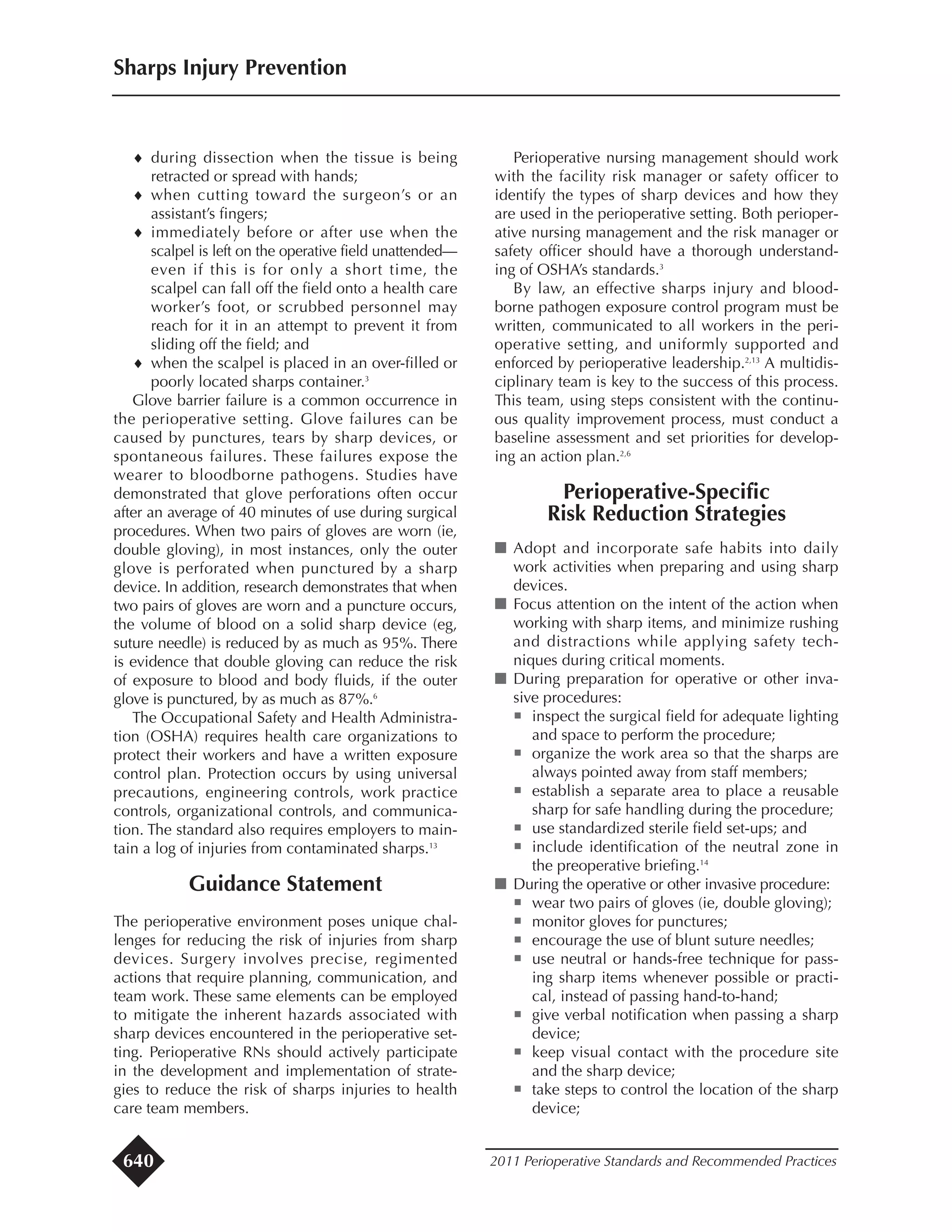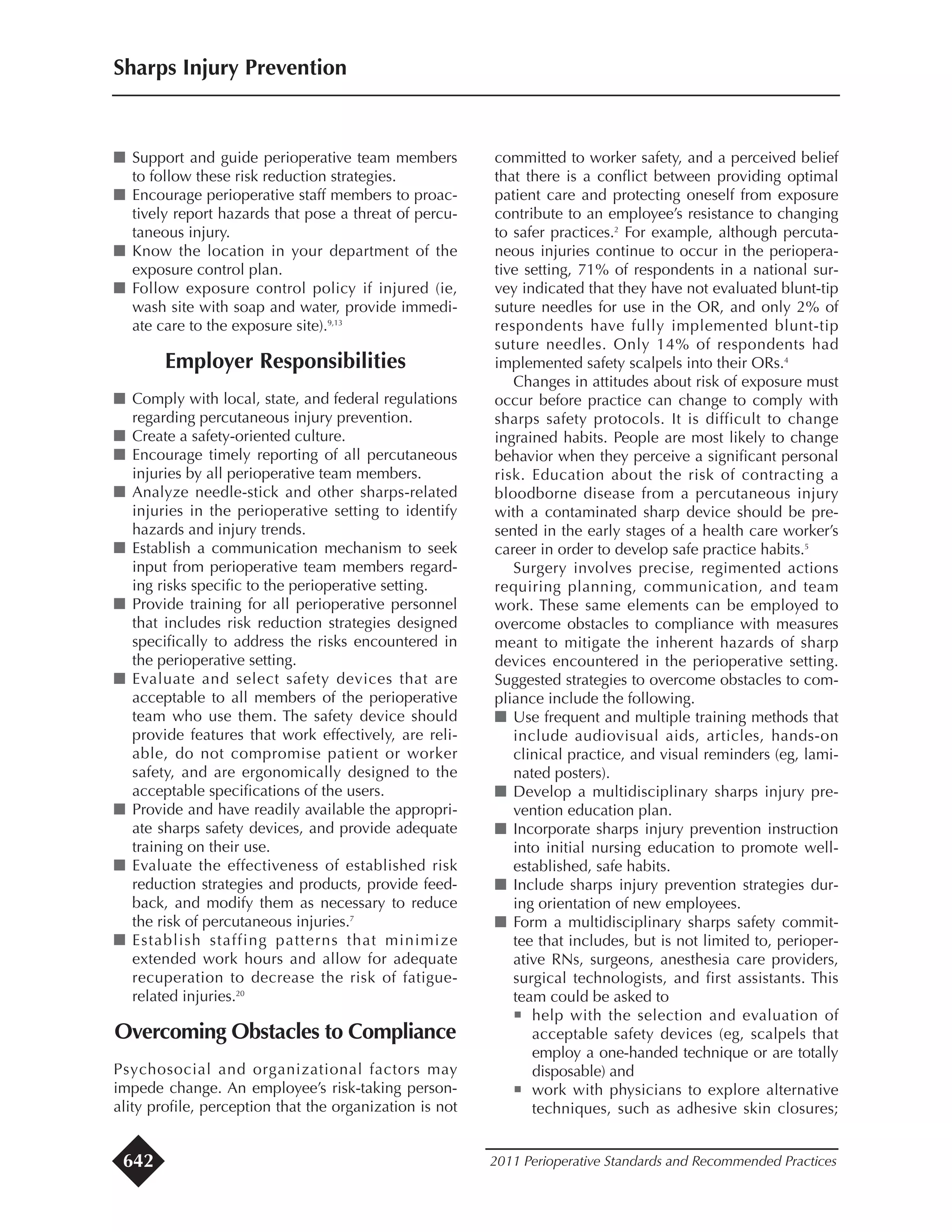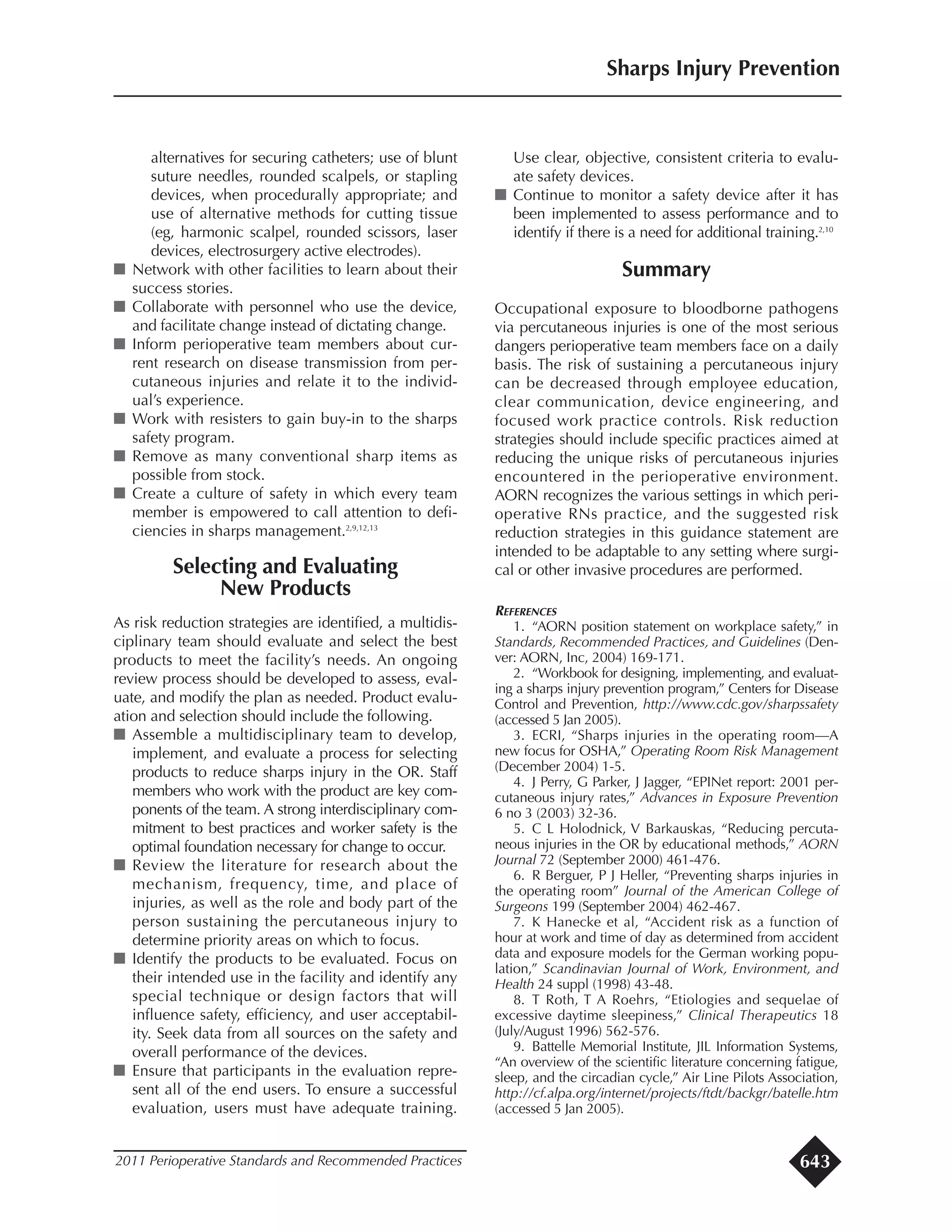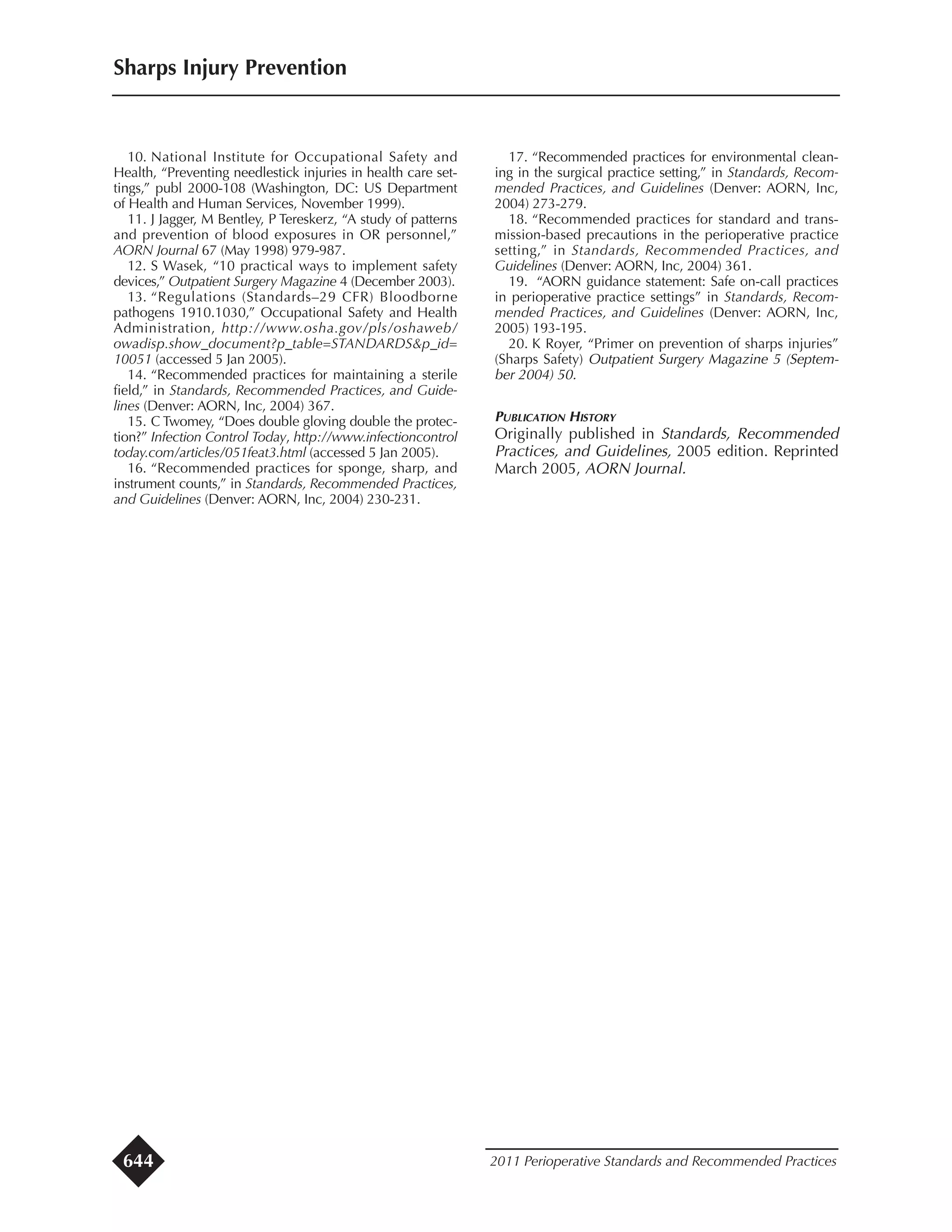This document provides guidance on developing sharps injury prevention programs in perioperative settings. It begins with an introduction stating that perioperative nurses face high risk of exposure to bloodborne pathogens from percutaneous injuries. The background section then discusses how injuries occur most often in certain high risk specialties and procedures. It also outlines the types of sharp devices that commonly cause injuries, such as suture needles and scalpels. The document concludes by providing recommendations for multi-level sharps injury prevention strategies involving individual nurses, employers, and overcoming obstacles to compliance.





